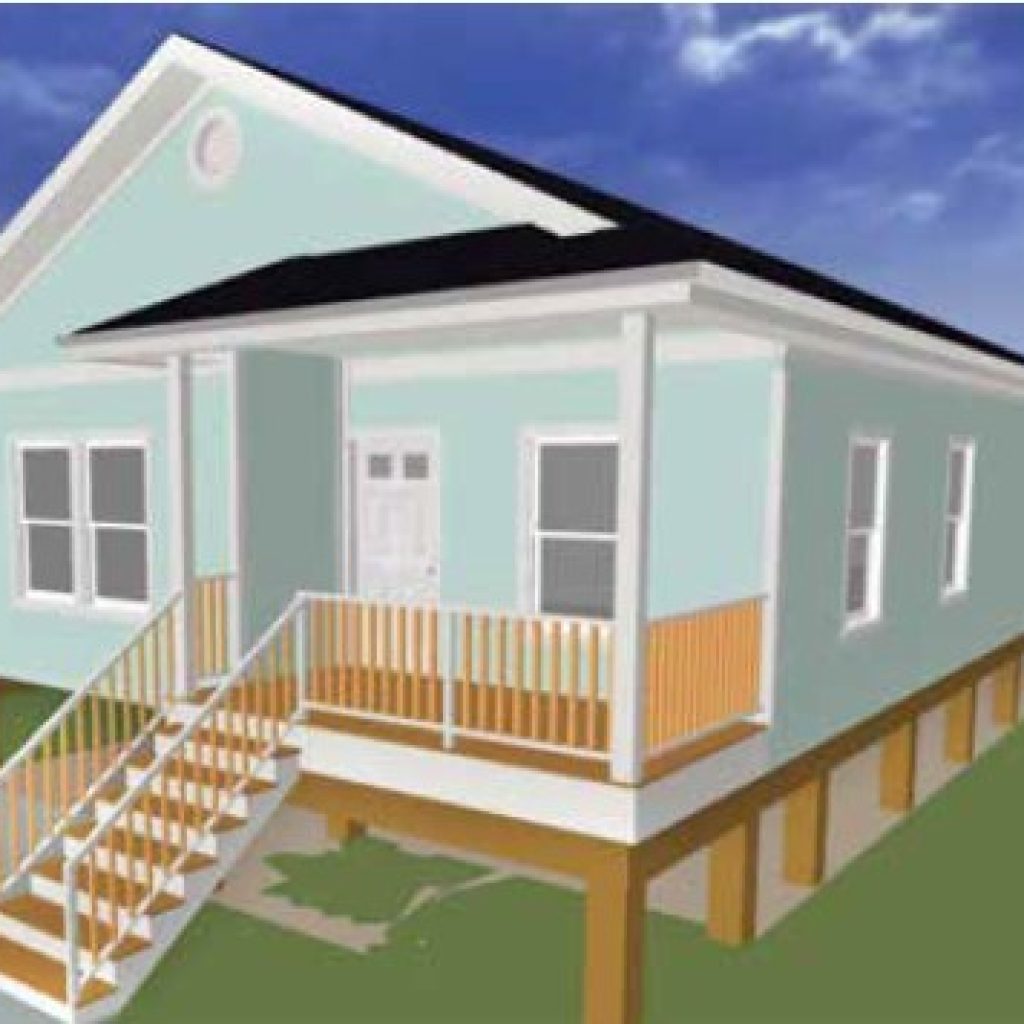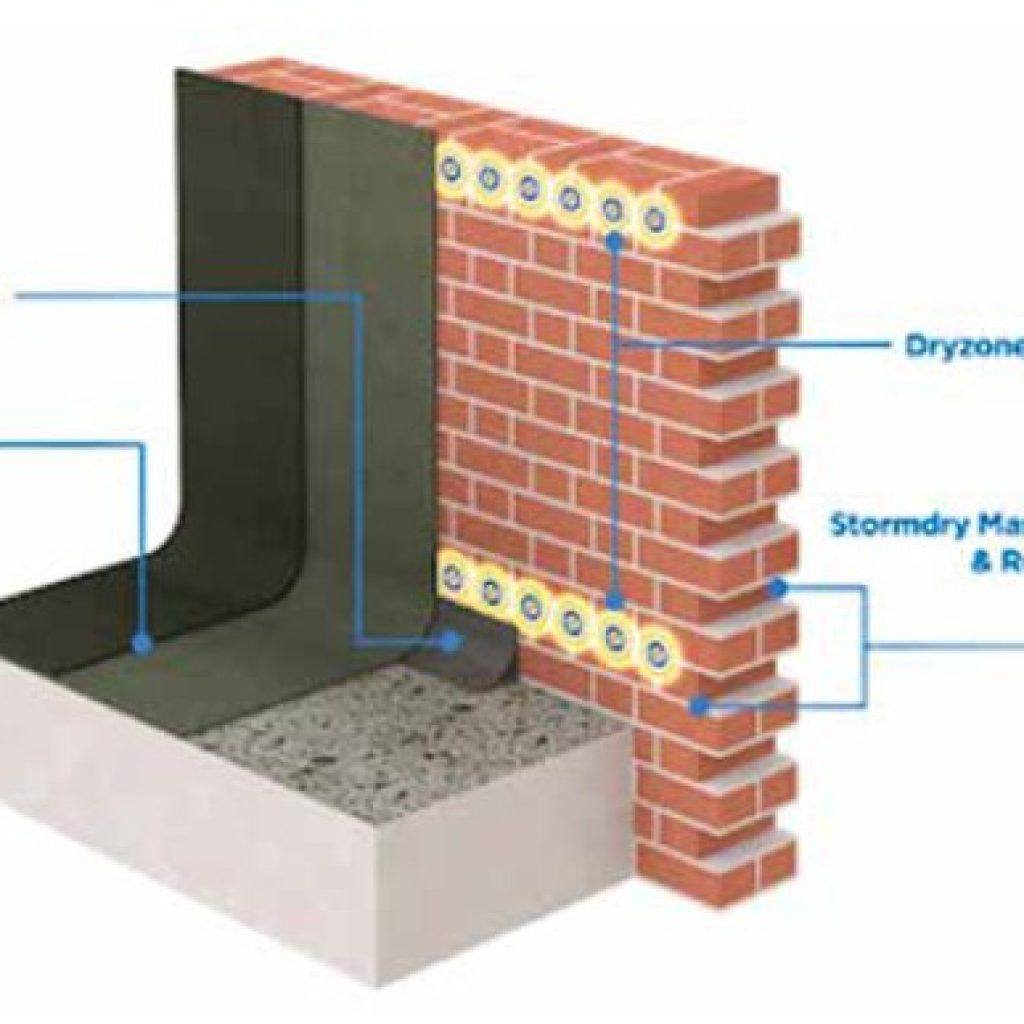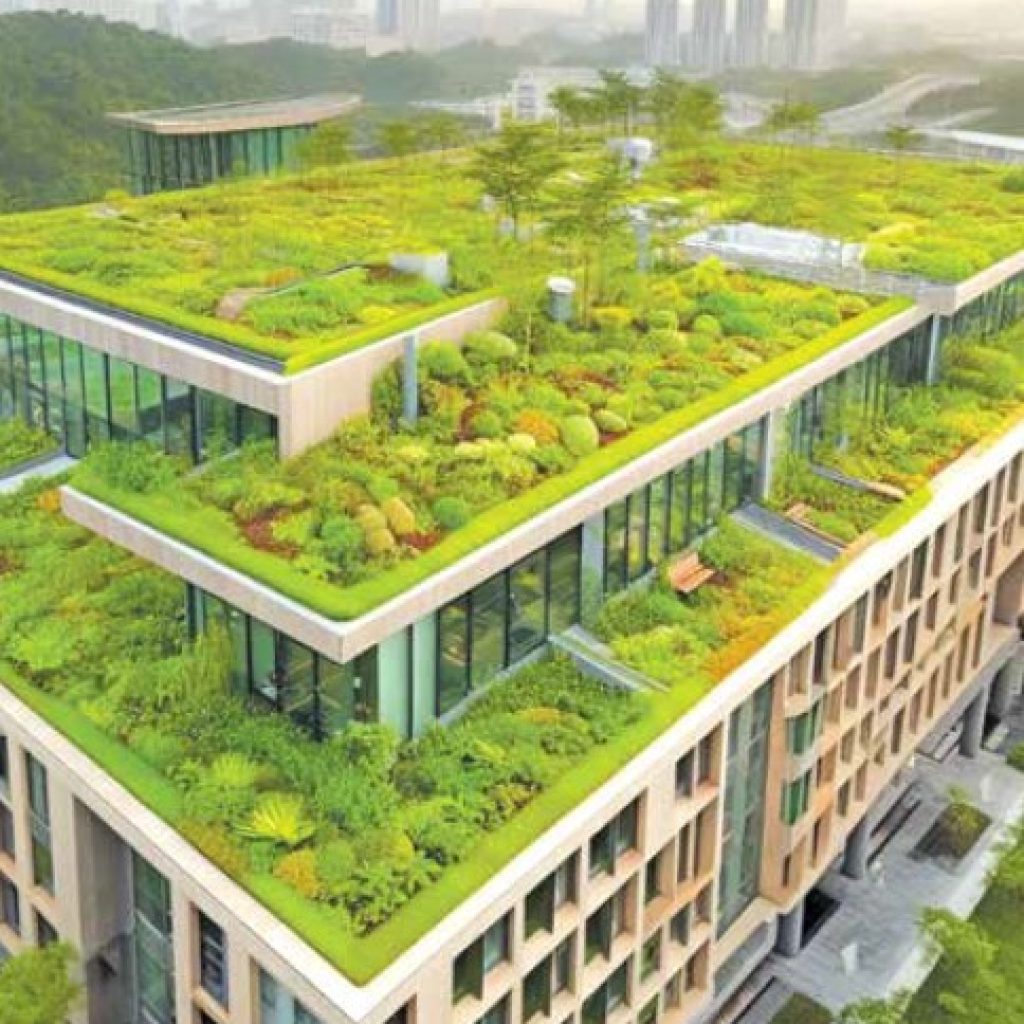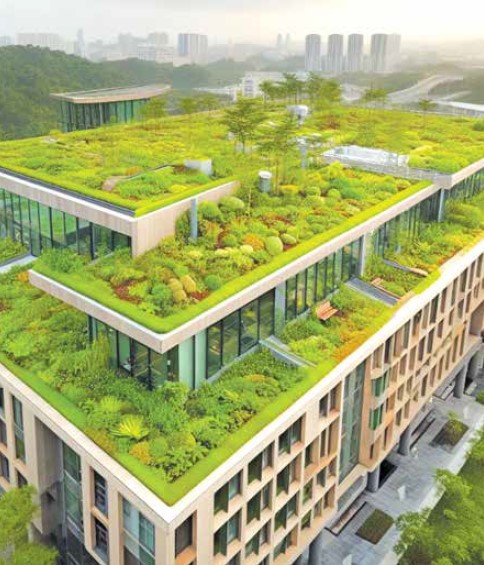Sapna Kumari holds a master’s degree in disaster management from Tata Institute of Social Sciences. As a seasoned disaster manager, she is currently engaged in the recovery efforts for the Balasore train disaster. She works closely with the State Disaster Management Authority of Bihar to enhance resilience and recovery strategies
This article contains an in-depth analysis of modular and prefabricated housing as a flood resilience solution, exploring how these structures can be quickly assembled in vulnerable areas. It highlights their potential to offer durable, flood-resistant designs while being cost-effective and adaptable to various terrains. By focusing on the benefits of using prefabrication in disaster-prone regions, the article underscores the importance of innovative housing solutions in enhancing community resilience and recovery efforts.

Introduction
As climate change accelerates, the frequency and intensity of flooding events are increasing, posing significant challenges to housing stability, community resilience, and human safety. Traditional construction methods often fall short in protecting homes against the impacts of flooding. However, innovative technologies and materials are emerging that promise to enhance flood resilience in housing. This article explores some of the groundbreaking solutions being adopted in flood-prone areas worldwide.
Innovative Solutions for Flood-Resilient Housing: Exploring New

Technologies and Materials
As climate change continues to reshape our world, one of the most alarming and frequent consequences is the rise of severe flooding events. Coastal regions, river basins, and even urban environments are grappling with unprecedented levels of flooding, which threatens homes, livelihoods, and entire communities. For many, the question is no longer whether they will face floods, but how often and how devastating these floods will be. In this new reality, the need for innovative, flood-resilient housing solutions has never been more urgent.
The idea of building flood-resistant homes is not entirely new. Coastal communities around the world have long employed techniques like elevating homes or using materials that withstand moisture. However, as flood risks grow in scale and complexity, architects, engineers, and material scientists are pushing the boundaries of what is possible. Today’s flood-resilient housing is a blend of futuristic technology and sustainable, time-tested practices, offering not just protection but a reimagined way of living in harmony with water.
Building Up, Not Out
One of the most straightforward methods to mitigate flood damage is to elevate homes above expected water levels. Historically, this meant stilt houses in riverine or coastal areas, where communities adapted to their water-rich environments. But modern elevated housing goes beyond simple stilt structures. Today, architects are elevating entire homes on sleek platforms that incorporate high-tech materials capable of withstanding both the weight of the home and the pressure of floodwaters.
In urban areas, where space is at a premium, these elevated designs take on new forms. Some homes are being designed with flexible, floating foundations that rise and fall with water levels. Rather than resisting the water, these homes embrace its ebb and flow. This concept, known as amphibious architecture, is gaining traction in flood-prone cities like New Orleans and Amsterdam, where the combination of beautiful design and flood resilience is becoming a priority for homeowners.
A New Generation of Materials
The choice of materials has always been critical in flood-prone construction. In the past, wood, brick, and traditional cement were the go-to choices for building homes. But with the intensifying floods, these materials often succumb to water damage, mold, and rot. Enter the new generation of flood-resistant materials designed not just to endure water but to thrive in wet environments.
Waterproof concrete is one such innovation, a seemingly magical material that can repel water while self-healing small cracks when exposed to moisture. This cutting-edge technology ensures that homes built with waterproof concrete are not only resistant to immediate flood damage but also remain strong for years, avoiding the costly repairs that come with traditional building materials. Another intriguing advancement is the use of engineered wood products, which combine the aesthetic warmth of timber with enhanced moisture resistance, ensuring that homes can remain both stylish and resilient in the face of flooding.

But perhaps the most exciting materials lie in the realm of composites. By blending natural fibers with polymers, scientists have created lightweight yet durable materials that are resistant to both moisture and environmental degradation. These composite materials are already being used in bridges, and their introduction into housing opens the door for flood-resistant homes that are not only strong but also environmentally friendly.
Rethinking How We Build Homes
Beyond the materials and designs, the entire process of homebuilding is evolving in response to the need for flood resilience. Modular and prefabricated homes, once thought of as temporary or low-quality housing, are now leading the charge in creating durable, flood-resistant homes that can be constructed quickly and affordably.
These homes are built off-site in climate-controlled environments, ensuring that each component is crafted with precision and using the best flood-resistant materials available. Once transported to the building site, they are assembled in a fraction of the time it would take to build a traditional home. What’s more, these modular designs are fully customizable, allowing homeowners in flood-prone regions to include features like elevated foundations or water-tight seals, depending on their specific needs.
The result is a revolution in homebuilding, where flood-resilient homes are not only more affordable but can also be tailored to the unique demands of local environments. In regions facing annual floods, prefabricated homes can be quickly deployed to replace destroyed housing, providing families with secure, long-term shelter in record time.
Smart Homes for Flood Protection
As we move further into the digital age, smart technologies are playing an increasingly important role in flood-resilient housing. Imagine a home that can not only detect rising water levels but also take action to protect itself. This is no longer a fantasy but a reality in some of the most forward-thinking communities around the world.
Homes equipped with flood sensors can alert homeowners and emergency services the moment floodwaters begin to rise, giving people critical time to evacuate or take protective measures. Automated flood barriers can deploy around homes, creating a protective shield that keeps floodwaters at bay. Even the interiors of these smart homes are designed with flood resilience in mind—backup power systems ensure that essential services like lighting and refrigeration continue to function even in the midst of a storm.
The integration of smart home technology into flood-resilient housing not only offers peace of mind but also contributes to a holistic approach to disaster preparedness. These homes become part of a larger network of flood management, where real-time data on water levels, storm surges, and rainfall can be used to protect entire communities.
Designing for the Future

Ultimately, the solutions to flood-resilient housing are not just technical but deeply intertwined with how we plan and design our communities. In many regions, urban planners are working closely with architects to create flood-resistant neighborhoods, where housing design is complemented by larger, community-wide flood management systems.
Green roofs, for example, are being incorporated into homes as a way to absorb rainfall and reduce runoff. These lush, plant-covered rooftops not only manage water but also help cool homes and reduce energy consumption, making them a perfect blend of sustainability and resilience. Permeable surfaces, such as porous concrete and permeable pavers, allow rainwater to filter into the ground rather than overwhelming drainage systems, further mitigating flood risks.
But perhaps the most powerful tool for creating flood-resilient housing is collaboration. Communities around the world are working together to share knowledge, experiences, and resources, ensuring that flood-resilient housing is not just for the wealthy but accessible to all. Governments are partnering with non-profits, engineering firms, and local residents to create housing solutions that are affordable, sustainable, and, above all, safe from floods.
Here are some solutions for flood resistant homes:
Elevated Structures
One of the most effective strategies for flood-resistant housing is the elevation of structures. By building homes on stilts, raised platforms, or piers, these elevated designs lift homes above potential floodwaters, significantly reducing the risk of water damage. This method has long been a staple in regions prone to river flooding and storm surges, from the coastal villages of Southeast Asia to the floodplains of the Mississippi River in the United States. However, with the growing threat of climate change and increasingly severe weather events, the practice of elevating homes has become not just a cultural adaptation but a critical necessity for flood-prone communities across the globe.
Recent advancements in engineering and design have brought about a transformation in the way these elevated homes are constructed. No longer do elevated structures need to be purely functional and bare; they are now seen as opportunities for aesthetic and architectural innovation. Architects are designing elevated homes that blend seamlessly with their surroundings, creating homes that stand out for their beauty as much as their resilience. In flood-prone urban areas like New Orleans or Jakarta, elevated homes are now being incorporated into cityscapes, balancing safety with style. These elevated designs are not just practical—they also serve as visual reminders of how cities can adapt to the realities of a changing climate.
In addition to the architectural advancements, techniques such as the use of geo-synthetic materials in foundation support have greatly enhanced the stability and longevity of these elevated structures. These high-tech materials provide extra reinforcement, allowing foundations to better withstand the pressures of shifting floodwaters and erosion. As floods become more frequent and severe due to climate change, this kind of technological innovation is crucial. Homes that incorporate these advanced materials are better equipped to endure repeated flood events, offering not just immediate protection but long-term resilience. In disaster-prone areas, the combination of elevated designs and modern materials is paving the way for safer, more sustainable living in an era of unpredictable weather.
Flood-Resistant Materials
As the threat of floods intensifies globally, particularly in coastal and low-lying areas, the need for innovative, flood-resilient housing has never been greater. Beyond traditional methods such as elevating homes, a new frontier of materials is emerging, designed specifically to withstand the unique challenges posed by floodwaters. These advanced materials offer not only enhanced protection during floods but also contribute to the long-term durability and sustainability of homes in vulnerable areas. Architects, engineers, and builders are increasingly exploring these materials to redefine what flood-resilient housing looks like in the face of more frequent and severe weather events.
One of the most revolutionary materials being utilized in flood-resilient construction is waterproof concrete. While concrete has long been a standard in construction, it has traditionally been vulnerable to water damage, especially in flood-prone areas where moisture seeps into the material, weakening its structure over time. Waterproof concrete changes the game entirely. This specialized concrete incorporates hydrophobic agents that actively repel water, preventing it from penetrating the surface and causing internal damage. In addition to its water-repelling capabilities, this material also boasts self-healing properties. When cracks begin to form—whether from normal wear and tear or during a flood—the concrete reacts to water exposure by sealing itself, effectively preventing further damage. This innovative material not only reduces the need for frequent repairs but also enhances the overall resilience of flood-affected structures, ensuring that they remain safe and habitable even after a disaster.
In addition to waterproof concrete, resilient wood products are also making waves in the field of flood-resistant housing. Traditionally, wood has been seen as a vulnerable material in flood conditions, as prolonged exposure to moisture can lead to warping, rotting, and mold growth. However, engineered wood products, such as Cross-Laminated Timber (CLT) and laminated veneer lumber (LVL), are changing this perception. These materials are specially designed to withstand the stresses of a flood. By layering timber in opposing directions, CLT and LVL offer remarkable durability and flexibility, even in high-moisture environments. They maintain their structural integrity when exposed to water, and treatments can be applied to enhance their resistance to moisture even further. These advancements in wood engineering are significant because they allow builders to maintain the natural aesthetic and sustainability of wood construction while ensuring the material can withstand the harsh conditions that come with flooding.
Composite materials represent another exciting innovation in flood-resilient construction. These materials, which combine natural fibers with polymers, offer a unique blend of strength, lightweight properties, and resistance to water damage. Composite materials are particularly advantageous in flood-prone areas because they resist rot and degradation, even when submerged for extended periods. Additionally, their lightweight nature allows for more flexibility in design and transportation, making them ideal for both pre-fabricated and traditional construction methods. In places where frequent flooding occurs, such as delta regions or tropical climates, composite materials can be used in everything from foundation elements to external cladding, providing an added layer of protection against the elements.
These advancements in materials science are more than just technical achievements; they represent a shift in how we approach building homes in the age of climate change. By incorporating materials like waterproof concrete, engineered wood, and composite fibers, builders are not only protecting homes from immediate flood damage but also ensuring that these homes remain resilient over time. As disasters become more frequent and destructive, the ability to quickly rebuild and recover is crucial, and these innovative materials are making it easier to do just that. In many ways, they are a testament to human ingenuity and our ability to adapt to the challenges posed by a rapidly changing environment.
In flood-prone areas around the world, these materials are already being put to use, providing a glimpse into the future of resilient housing. From coastal cities like New York and Miami to rural villages in Bangladesh and the Philippines, homes built with these cutting-edge materials are standing strong against the forces of nature. As we look to the future, the integration of these technologies will likely become the new standard in flood-resilient design, helping communities not only survive but thrive in the face of disasters.
Modular and
Prefabricated Housing
Modular and prefabricated housing has gained traction as an innovative solution for flood resilience. These structures are built off-site and assembled on location, allowing for greater control over construction quality and materials. Key benefits include:
- Rapid Deployment: In disaster-prone areas, modular homes can be quickly deployed to provide immediate shelter after a flood event. Their prefabricated nature ensures that they can be produced in bulk and installed rapidly.
- Customizable Designs: Modular homes can be customized to meet specific flood resilience requirements. Designers can incorporate features such as elevated foundations and flood-resistant materials based on local risks.
- Cost-Effectiveness: Prefabricated construction often reduces labor costs and construction time, making it a more affordable option for flood-prone regions.
Green Roofs and
Sustainable Design
Incorporating green roofs into flood-resilient housing provides multiple benefits. Green roofs not only manage stormwater runoff but also enhance insulation, reduce urban heat, and improve air quality. By absorbing rainfall, these roofs help mitigate flooding and can reduce the volume of water that needs to be managed by stormwater systems.
Additionally, sustainable design principles are increasingly being integrated into flood-resilient housing. This includes:
Permeable Surfaces: Using permeable materials for driveways and walkways allows rainwater to infiltrate the ground rather than accumulate and contribute to flooding.
Rainwater Harvesting Systems: These systems capture and store rainwater for reuse, reducing demand on municipal water systems and helping manage stormwater runoff.
Smart Technologies
The integration of smart technologies in flood-resilient housing is revolutionizing how we approach flood management. Smart homes equipped with sensors and monitoring systems can provide real-time data on weather conditions, water levels, and potential flood risks. - Flood Detection Sensors: These sensors can detect rising water levels and send alerts to homeowners, allowing for timely evacuations or protective measures.
- Automated Flood Barriers: Advanced technologies now allow for the installation of automated flood barriers that deploy when water levels rise, providing an additional layer of protection.
- Smart Home Systems: Integrating smart home technology can also enhance energy efficiency and emergency preparedness. For instance, homes can be equipped with backup power systems that activate during a flood, ensuring residents have access to necessary utilities.
Community-Centric
Approaches
Innovative flood-resilient housing extends beyond individual homes to encompass entire communities. Collaborative efforts that involve local governments, organizations, and residents can lead to comprehensive flood management strategies. - Community Planning: Urban planning that prioritizes green spaces and water management can create buffer zones that absorb excess water and reduce flooding impacts.
- Participatory Design: Engaging communities in the design process ensures that housing solutions are tailored to local needs and cultural contexts.
- Public Awareness and Training: Education initiatives that promote awareness about flood risks and preparedness can empower communities to take proactive measures in safeguarding their homes.
Conclusion
As the world faces the escalating impacts of climate change, the way we build homes must change as well. Flood-resilient housing is no longer a luxury but a necessity in many parts of the world. By embracing innovative materials, modular construction, smart technologies, and sustainable design principles, we can create homes that not only withstand floods but offer a better quality of life for those who live in them.
Innovative solutions for flood-resilient housing are critical in addressing the challenges posed by increasing flooding events. From elevated structures and advanced materials to smart technologies and community-centric approaches, these strategies promise to enhance the resilience of homes and communities alike. As we continue to confront the realities of climate change, investing in flood-resilient housing will not only protect lives and property but also contribute to the sustainability and livability of our urban environments.
The future of housing lies in resilience, and with the right solutions, we can ensure that communities are not just surviving but thriving in a world where water is both a resource and a challenge. Flood-resilient housing represents a bold step forward, a testament to human ingenuity in the face of nature’s greatest forces.
By embracing innovation and collaboration, we can build a future where communities are better equipped to withstand and recover from flooding, ensuring a safer, more resilient world for generations to come.






